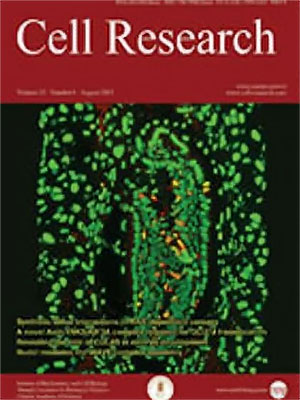Volume 4 Issue 2, December 1994: 201-215
ORIGINAL ARTICLES
Structural analysis of DMD gene and its clinical application in Chinese.I. Bgl II exon-containing fragment,RFLP and carrier detection
Yu Long, Ning Wang, Yu Deng, YuMei Yang, ShenXing MuRong ShouYuan Zhao
Institute of Genetics, National Key Laboratory of Genetic Engineering, Fudan University, Shanghai 200433, China
Department of Neurology, Fujing Medical College, Fuzhou 350005, China
Correspondence: Yu Long
This article is one of the serial studies oll the characteristics of the molecular structure for dystrophin gene in Chinese. By using the entire dystrophin cDNA (14 kb) as a probe- the number and RFLPs of Bgl Ⅱ exon-containing fragments of the dystrophin gene were analysed. Four new Bgl Ⅱ fragments were found, two of them (3.7 and 6.2 kb) detected by comparing the hybridization patterns with cDNA1-2a. 1a and 2a, one (9.3 kb) from the hybridization pattern with cDNA 9 by lengthening migrating distance of DNA fragments in electrophoresis. and another one (4.0 kb) by comparing the patterns with cDNA 11-14,11a- 11b' 11c-12a and 14. The results indicated that the number of Bgl Ⅱ exon-containing fragments should be 59 rather than 55 reported previously, which laid the foundation of the Bgl Ⅱ partial restriction map for dystrophin gene. Three of the four RFLPs found in Caucacian appear in the hybridization patterns of three subclones, i.e.cDNA 2b-3. cDNA 4-5, and cDNA 5b-7.' The values of expected heterozygote frequency (OHF) were 0.40, 0.40 and 0.48 respectively. Meanwhile, two new rare allelic fragments (15 kb) were found in RFLPs from Bgl II/2b-3 and Bgl II/4-5a patterns respectively. These Bgl II RFLPs and four XbaI RFLPs documented in our laboratory have been used to detect the carrier in 7 DMD families and 1 BMD family Of the 69 individuals from the 8 families, 11 females were diagnosed as the carriers with DMD mutation, 4 females as the doubtful carriers, 12 females were defined as normal genotype and 2 femals as probably normal. The results suggest that the carrier testing method based on dosage intesity analysis and genotype analysis by using dystrphin cDNA as a probe will be more sensitive and accurate.
FULL TEXT | PDF
Browse 2578


